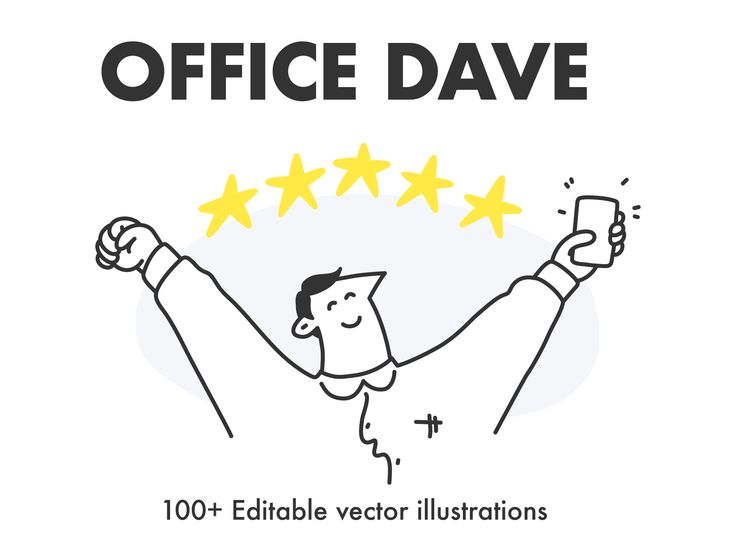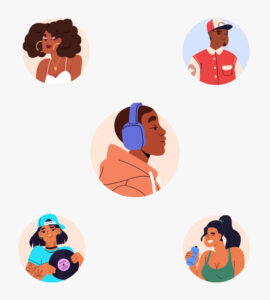Project Description
Officedave illustrations
Unlocking the Power of Officedave Illustrations: The Artistic Lens that Inspires and Engages
In today's visually-driven world, illustrations have become a powerful tool to capture attention, convey messages, and inspire emotions. Whether in advertising, web design, or storytelling, OfficeDave illustrations have a unique ability to engage audiences and create a lasting impact.
With their artistic lens, Officedave illustrations transcend language barriers and communicate ideas in a universally relatable way. They have the power to simplify complex concepts, lend a touch of whimsy to serious topics, or evoke nostalgia and sentimentality. From bold and vibrant styles to delicate and intricate details, every illustration is a visual story waiting to be explored.
Officedave illustrations in Visual Storytelling
Officedave Illustrations are more than just pretty pictures; they are a powerful tool in visual storytelling. In a world saturated with information and content, illustrations have the ability to grab attention and convey messages in a way that words alone cannot. They have the power to bring stories to life, evoke emotions, and create a lasting impact on the viewer.
One of the key advantages of illustrations in storytelling is their ability to transcend language barriers. While words may vary from culture to culture, illustrations have a universal visual language that can be understood by people from all walks of life. This makes them an effective tool for communicating complex ideas or concepts that may be difficult to express through words alone.
Moreover, illustrations have the power to simplify complex concepts and make them more accessible to a wider audience. By distilling information into visual form, illustrations can break down barriers and make even the most abstract or technical topics easier to understand. They can turn data into digestible visuals, making information more engaging and memorable.
In addition, officedave illustrations have the ability to lend a touch of whimsy and creativity to serious or mundane topics. They can inject personality and playfulness into brand communication, making it more relatable and memorable. Whether it's a quirky character or a clever visual metaphor, illustrations have the power to captivate audiences and leave a lasting impression.
Hence it is 100% vector and free officedave illustrations. You can easily scale it to the size you need and use it for prints, in apps, on t-shifts, etc. It is effortless to use, just change colours and shapes as you wish in a few clicks in Sketch, Figma, Adobe Illustrator, or Adobe XD to fit the colour palette of your product or brand.

Officedave illustrations Can Enhance Brand Identity
In today's competitive market, standing out from the crowd is crucial for any brand. Illustrations offer a unique opportunity to differentiate your brand and create a memorable visual identity. By incorporating illustrations into your brand communication, you can create a distinct and recognizable style that sets you apart from your competitors.
Officedave Illustrations have the ability to convey the personality and values of a brand in a way that words alone cannot. Whether it's through the use of color, style, or visual elements, illustrations can evoke emotions and create a connection with your audience. They can humanize your brand, making it more relatable and approachable.
Moreover, Officedave illustrations can be used to tell the story of your brand. They can depict the journey, values, or mission of your company, creating a narrative that resonates with your audience. By using illustrations consistently across different touchpoints, from your website to your social media channels, you can build a cohesive brand identity that is instantly recognizable.
Another benefit of using officedave illustrations in branding is their versatility. With illustrations, you have the freedom to create visuals that reflect your brand's unique personality and style. Whether you prefer a minimalist and clean aesthetic or a bold and vibrant approach, illustrations can be tailored to suit your brand's visual language.
By incorporating officedave illustrations into your brand identity, you can create a visual language that speaks directly to your target audience, engages them on an emotional level, and leaves a lasting impression.
The Psychological Impact of Illustrations on the Viewer
Officedave Illustrations have a profound psychological impact on the viewer. They have the power to evoke emotions, trigger memories, and influence behavior. By understanding the psychological principles behind illustrations, you can harness their power to create a stronger connection with your audience.
One of the key psychological principles at play in illustrations is the concept of visual storytelling. Humans are wired to respond to stories, and illustrations have the ability to tell stories in a visual form. When we see an illustration, our brains automatically start to create a narrative around it, filling in the gaps and making sense of the visual cues. This engagement with the illustration creates a deeper connection with the viewer, making the message more memorable and impactful.
Moreover, officedave illustrations have the ability to tap into our emotions and trigger a response. Different styles, colors, and visual elements can evoke different emotions in the viewer. For example, bright and vibrant illustrations may evoke feelings of joy and excitement, while muted and soft illustrations may evoke a sense of tranquility or nostalgia. By understanding the emotional impact of different visual elements, you can use illustrations strategically to create the desired emotional response in your audience.
Furthermore, officedave illustrations have the power to tap into our memories and trigger nostalgia. Whether it's through a familiar visual style or a depiction of a past era, illustrations can transport us back in time and evoke feelings of nostalgia and sentimentality. This emotional connection with the past can create a sense of familiarity and comfort, making the viewer more receptive to the message being conveyed.
By understanding the psychological impact of illustrations, you can leverage their power to engage your audience on a deeper level, create a stronger emotional connection, and drive the desired behavior.
Different Styles of Officedave Illustrations and When to Use Them
Officedave Illustrations come in a wide range of styles, each with its own unique characteristics and visual language. Choosing the right style of illustration for your project is crucial to effectively communicate your message and engage your audience. Here are some of the most popular styles of illustrations and when to use them:
- Minimalist: Minimalist illustrations are characterized by their clean lines, simple shapes, and limited color palette. They are often used to convey a sense of simplicity, elegance, and modernity. Minimalist illustrations can be effective in conveying complex ideas or concepts in a visually appealing and easy-to-understand way.
- Hand-drawn: Hand-drawn illustrations have a charming and personal touch that can evoke a sense of authenticity and warmth. They are often used in branding to create a friendly and approachable image. Hand-drawn illustrations can be particularly effective in industries such as food, fashion, or lifestyle, where a personal connection with the audience is important.
- Whimsical: Whimsical illustrations are characterized by their playful and imaginative nature. They often feature fantastical elements, exaggerated proportions, and vibrant colors. Whimsical illustrations can be used to inject personality and creativity into brand communication, making it more memorable and engaging.
- Realistic: Realistic illustrations aim to faithfully depict people, objects, or scenes. They are often used in industries such as healthcare, technology, or education, where accuracy and attention to detail are important. Realistic illustrations can add credibility and professionalism to your brand communication, making it more trustworthy and authoritative.
- Flat design: Flat design illustrations are characterized by their simplified and two-dimensional appearance. They often feature bold colors, geometric shapes, and minimal shading. Flat design illustrations can be used to create a modern and clean aesthetic, particularly in digital interfaces or web design.
- Collage: Collage illustrations are created by combining different elements, such as photographs, textures, or hand-drawn elements, to create a visually rich and layered composition. Collage illustrations can add depth and texture to your brand communication, making it more visually interesting and dynamic.
When choosing the style of officedave illustration for your project, consider the nature of your message, your target audience, and your brand personality. The style of illustration should align with your brand identity and effectively convey the desired message to your audience.
Tips for Incorporating Officedave Illustrations into Your Marketing Materials
Incorporating illustrations into your marketing materials can be a powerful way to engage your audience and create a memorable brand experience. Here are some tips to help you effectively incorporate illustrations into your marketing strategy:
- Understand your audience: Before incorporating illustrations into your marketing materials, it's important to have a clear understanding of your target audience. What are their preferences, interests, and values? By understanding your audience, you can create illustrations that resonate with them on a deeper level and create a stronger emotional connection.
- Tell a story: Illustrations have the power to tell stories in a visual form. When incorporating illustrations into your marketing materials, think about how they can contribute to the overall narrative. What story do you want to tell? How can illustrations enhance the storytelling experience? By incorporating illustrations that align with your brand story, you can create a more immersive and engaging brand experience.
- Maintain consistency: Consistency is key when incorporating illustrations into your marketing materials. Use a consistent visual style, color palette, and visual elements across different touchpoints. This will help create a cohesive brand identity and make your marketing materials instantly recognizable.
- Integrate with other elements: Illustrations should not exist in isolation; they should be seamlessly integrated with other design elements, such as typography, photography, or graphic elements. By integrating it with other design elements, you can create a visually harmonious and balanced composition.
- Experiment with different formats: Illustrations can be used in a variety of formats, from print materials to digital interfaces. Experiment with different formats to see what works best for your brand and audience. For example, you can use illustrations in social media posts, website banners, or printed brochures. Don't be afraid to think outside the box and explore new ways to incorporate illustrations into your marketing strategy.
By following these tips, you can effectively incorporate illustrations into your marketing materials, engage your audience, and create a memorable brand experience.
Officedave illustrations - Download below
The library is under license CC0. This means it is Free for Commercial and Personal Use: no need to credit, license, or anything.
Check out other illustrations like Reviews illustration Free working man illustration





